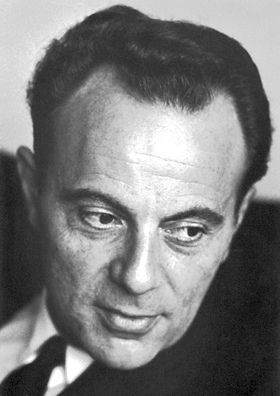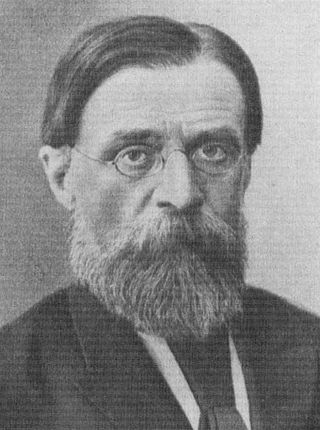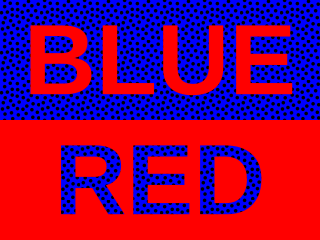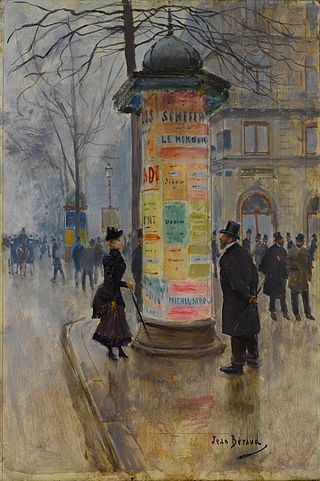
The photoelectric effect is the emission of electrons when electromagnetic radiation, such as light, hits a material. Electrons emitted in this manner are called photoelectrons. The phenomenon is studied in condensed matter physics, and solid state and quantum chemistry to draw inferences about the properties of atoms, molecules and solids. The effect has found use in electronic devices specialized for light detection and precisely timed electron emission.
A tactile illusion is an illusion that affects the sense of touch. Some tactile illusions require active touch, whereas others can be evoked passively. In recent years, a growing interest among perceptual researchers has led to the discovery of new tactile illusions and to the celebration of tactile illusions in the popular science press. Some tactile illusions are analogous to visual and auditory illusions, suggesting that these sensory systems may process information in similar ways; other tactile illusions don't have obvious visual or auditory analogs.

François Jacob was a French biologist who, together with Jacques Monod, originated the idea that control of enzyme levels in all cells occurs through regulation of transcription. He shared the 1965 Nobel Prize in Medicine with Jacques Monod and André Lwoff.

The term phi phenomenon is used in a narrow sense for an apparent motion that is observed if two nearby optical stimuli are presented in alternation with a relatively high frequency. In contrast to beta movement, seen at lower frequencies, the stimuli themselves do not appear to move. Instead, a diffuse, amorphous shadowlike something seems to jump in front of the stimuli and occlude them temporarily. This shadow seems to have nearly the color of the background. Max Wertheimer first described this form of apparent movement in his habilitation thesis, published 1912, marking the birth of Gestalt psychology.
The flicker fusion threshold, critical flicker frequency (CFF) or flicker fusion rate, is a concept in the psychophysics of vision. It is defined as the frequency at which an intermittent light stimulus appears to be completely steady to the average human observer. A traditional term for flicker fusion is "persistence of vision", but this has also been used to describe positive afterimages or motion blur. Although flicker can be detected for many waveforms representing time-variant fluctuations of intensity, it is conventionally, and most easily, studied in terms of sinusoidal modulation of intensity.
Cosmic ray visual phenomena, or light flashes (LF), also known as Astronaut's Eye, are spontaneous flashes of light visually perceived by some astronauts outside the magnetosphere of the Earth, such as during the Apollo program. While LF may be the result of actual photons of visible light being sensed by the retina, the LF discussed here could also pertain to phosphenes, which are sensations of light produced by the activation of neurons along the visual pathway.
Multisensory integration, also known as multimodal integration, is the study of how information from the different sensory modalities may be integrated by the nervous system. A coherent representation of objects combining modalities enables animals to have meaningful perceptual experiences. Indeed, multisensory integration is central to adaptive behavior because it allows animals to perceive a world of coherent perceptual entities. Multisensory integration also deals with how different sensory modalities interact with one another and alter each other's processing.
Neural adaptation or sensory adaptation is a gradual decrease over time in the responsiveness of the sensory system to a constant stimulus. It is usually experienced as a change in the stimulus. For example, if a hand is rested on a table, the table's surface is immediately felt against the skin. Subsequently, however, the sensation of the table surface against the skin gradually diminishes until it is virtually unnoticeable. The sensory neurons that initially respond are no longer stimulated to respond; this is an example of neural adaptation.
François-Marie Raoult was a French chemist who conducted research into the behavior of solutions, especially their physical properties.

Gas-discharge lamps are a family of artificial light sources that generate light by sending an electric discharge through an ionized gas, a plasma.

Alexander Grigorievich Stoletov was a Russian physicist, founder of electrical engineering, and professor in Moscow University. He was the brother of general Nikolai Stoletov.
The kappa effect or perceptual time dilation is a temporal perceptual illusion that can arise when observers judge the elapsed time between sensory stimuli applied sequentially at different locations. In perceiving a sequence of consecutive stimuli, subjects tend to overestimate the elapsed time between two successive stimuli when the distance between the stimuli is sufficiently large, and to underestimate the elapsed time when the distance is sufficiently small.
The tau effect is a spatial perceptual illusion that arises when observers judge the distance between consecutive stimuli in a stimulus sequence. When the distance from one stimulus to the next is constant, and the time elapsed from one stimulus to the next is also constant, subjects tend to judge the distances, correctly, as equal. However, if the distance from one stimulus to the next is constant, but the time elapsed from one stimulus to the next is not constant, then subjects tend to misperceive the interval that has the shorter temporal interval as also having a shorter spatial interval. Thus, the tau effect reveals that stimulus timing affects the perception of stimulus spacing. Time is also a perceived quantity and subject to its own illusions; research indicates that in the tau effect, perceived stimulus spacing follows perceived (phenomenal) time rather than actual (physical) time.

The flash lag illusion or flash-lag effect is a visual illusion wherein a flash and a moving object that appear in the same location are perceived to be displaced from one another. Several explanations for this simple illusion have been explored in the neuroscience literature.
The study of time perception or chronoception is a field within psychology, cognitive linguistics and neuroscience that refers to the subjective experience, or sense, of time, which is measured by someone's own perception of the duration of the indefinite and unfolding of events. The perceived time interval between two successive events is referred to as perceived duration. Though directly experiencing or understanding another person's perception of time is not possible, perception can be objectively studied and inferred through a number of scientific experiments. Some temporal illusions help to expose the underlying neural mechanisms of time perception.
Flash suppression is a phenomenon of visual perception in which an image presented to one eye is suppressed by a flash of another image presented to the other eye.

Chromostereopsis is a visual illusion whereby the impression of depth is conveyed in two-dimensional color images, usually of red–blue or red–green colors, but can also be perceived with red–grey or blue–grey images. Such illusions have been reported for over a century and have generally been attributed to some form of chromatic aberration.

The Lalande Prize was an award for scientific advances in astronomy, given from 1802 until 1970 by the French Academy of Sciences.

A phantom contour is a type of illusory contour. Most illusory contours are seen in still images, such as the Kanizsa triangle and the Ehrenstein illusion. A phantom contour, however, is perceived in the presence of moving or flickering images with contrast reversal. The rapid, continuous alternation between opposing, but correlated, adjacent images creates the perception of a contour that is not physically present in the still images. Quaid et al. have also authored a PhD thesis on the phantom contour illusion and its spatiotemporal limits which maps out limits and proposes mechanisms for its perception centering around magnocellularly driven visual area MT.

Eye movement in scene viewing refers to the visual processing of information presented in scenes. This phenomenon has been studied in a range of areas such as cognitive psychology and psychophysics, where eye movement can be monitored under experimental conditions. A core aspect in these studies is the division of eye movements into saccades, the rapid movement of the eyes, and fixations, the focus of the eyes on a point. There are several factors which influence eye movement in scene viewing, both the task and knowledge of the viewer, and the properties of the image being viewed. The study of eye movement in scene viewing helps to understand visual processing in more natural environments.










